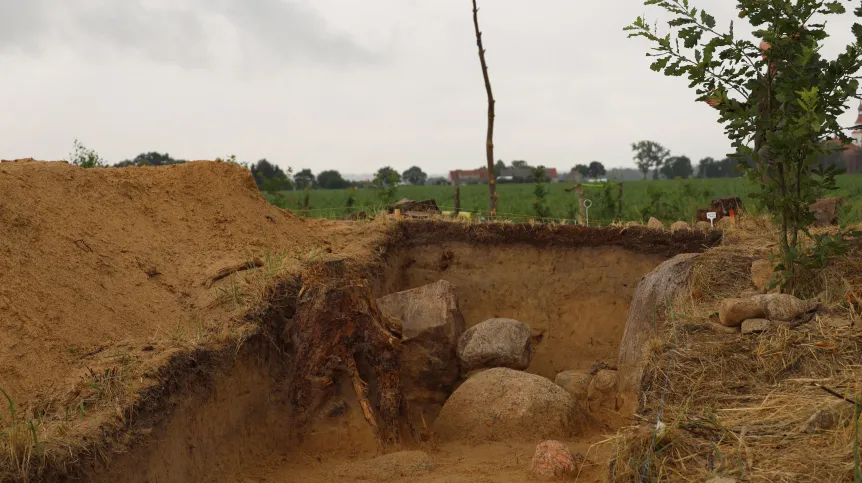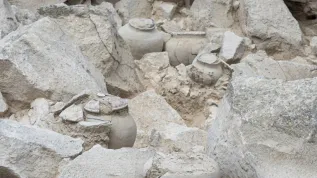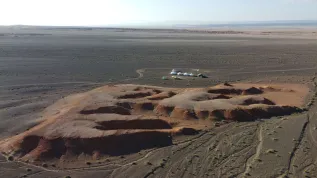
A cluster of megalithic tombs dating back 5,500 years has been discovered in the General Dezydery Chłapowski Landscape Park in Greater Poland, marking the latest find of so-called "Polish pyramids" associated with the Funnelbeaker culture.
The discovery was confirmed through archaeological excavation and announced by the Greater Poland Voivodeship Landscape Parks Complex (ZPKWW).
The tombs were first identified through remote sensing landscape analysis conducted by ZPKWW staff in the village of Wyskoć, in the Kościan commune. Excavations were carried out during a research camp organized by the Faculty of Archaeology at Adam Mickiewicz University, led by Dr. Danuta Żurkiewicz and Dr. Iwona Sobkowiak-Tabaka, a professor at the university.
“Archaeological verification of two structures, including excavation of one of them, have confirmed the discoverers' suspicions that they are long earth tombs built 5,500 years ago, at the end of the Stone Age (Neolithic), by the Funnelbeaker culture,” the ZPKWW reported.
The structures uncovered are of the so-called Kujawy type, considered some of the largest prehistoric burial sites in Poland. Built in the 4th millennium BCE, these tombs are typically elongated earth mounds, some stretching nearly 200 meters in length, and are colloquially referred to as “Polish pyramids” or “beds of giants.”
Artur Golis, Chief Specialist for Nature and Landscape Protection at ZPKWW, said: “Remains of stone structures were uncovered during the excavations. Elements of the stonework surrounding this structure were beautifully captured.
“They are shifted, of course, because 5,500 years of age have affected the structure; the largest boulders that formed the front of the megalith are no longer there. For thousands of years, people have needed the stone, so they removed and chipped it, resulting in the site being quite severely degraded.”
These megalithic tombs were constructed in the shape of elongated triangles, with a wide, elevated front made of heavy boulders, narrowing gradually toward a low-lying tail. The front of the tombs typically faced east, while the tail extended westward—a design believed to reference long trapezoidal houses of earlier Neolithic cultures.
Five promising features have been identified within the landscape park, with two confirmed as tombs at the Wyskoć site.
“Although the Funnel Beaker cultures were quite egalitarian, the tombs were burial places of important figures for the community—the leader, the priest, the shaman. Each generation of a given community built its own megalith,” Golis said.
Typically, each tomb held a single skeletal burial. The body was laid supine, with legs pointed toward the front of the tomb (facing east), and was surrounded by grave goods and a separate stone enclosure, sometimes cobbled.
“In the case of this megalith, the skeleton has probably not survived, but the grave goods may have. Potentially, these could have included stone axes, hatchets, pottery, or characteristic clay vessels, including the so-called flask with a ruff – a small poppy-head-shaped vessel suggesting the use of opium. Perhaps some copper ornaments were present,” Golis said.
Until 2019, megalithic tombs of this type had not been documented in Greater Poland. That year, researchers from Adam Mickiewicz University and the Archaeological Museum in Poznań discovered five tombs near Rokietnica using airborne laser scanning (ALS).
In 2020, follow-up excavations confirmed the structures were indeed Kujawy-type megaliths. Additional sites have since been identified in Sierpówek, Szamotuły commune.
Ewelina Krajczyńska-Wujec (PAP)
ekr/ bar/ amac/













